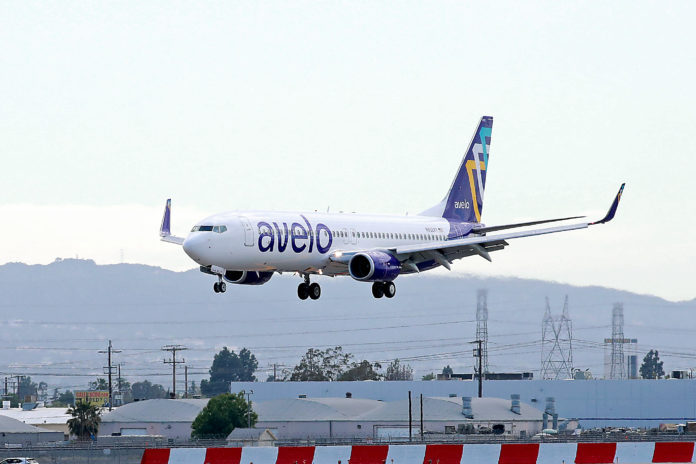April was a mixed bag for passenger traffic at the four airports serving L.A. County as two airports – Hollywood Burbank and Ontario International – posted increases and the other two airports – Long Beach and Los Angeles International – saw declines.
Overall, passenger traffic at the four airports serving Los Angeles County dipped 1% in April compared to the same month last year. That’s on top of a 4% drop in passengers during the first quarter this year compared with last year.
The slight overall drop came amidst several challenges facing the tourism sector and the Los Angeles market. The chaos surrounding President Donald Trump’s imposition of tariffs has injected uncertainty into the economy, impacting travel decisions. Trump also continued his rhetorical campaign against Canada, prompting many Canadians to pull back on their travel plans to the United States. Southern California has long been one of the biggest tourist destinations for Canadians. And the escalating trade war between the United States and China has also impacted the flow of Chinese tourists into the region.
Locally, the Los Angeles region suffered early in the year from the spread of images of January’s wildfires. Some tourists who might have booked spring travel plans to the region reconsidered those plans in the wake of the fires.
Long Beach Airport posted the biggest drop of 9% in passengers in April compared to the same month last year. The municipal airport is now greatly tied to the fortunes of Dallas-based Southwest Airlines Co., which holds close to 90% of all flights at the airport. Southwest’s struggles over the last several months have included shortages of planes and customer dissatisfaction with the new policy of charging for checked baggage.
Nonetheless, Southwest is continuing to add flights out of Long Beach. Airport Director Cynthia Guidry pointed to the airline starting red-eye flights to Baltimore/Washington International Airport this month.
LAX: International up, but domestic down.
LAX, meanwhile, also recorded a year-over-year decline in passengers in April, but the nearly 2% drop was smaller than in recent months, thanks to a nearly 3% rise in international passengers that at least temporarily reversed the recent trend. One possible reason for the increase in international travel may be the falling value of the dollar compared to major world currencies – a cheaper dollar means international travelers get more for their money in the United States.
But that was the only ray of good news. Domestic passenger traffic at LAX fell nearly 4% in April compared to last year, more than wiping out the gains in international travelers. Domestic passenger counts are now back at 20% below pre-pandemic 2019 levels, a dubious milestone that was last seen three years ago as Covid-era air travel restrictions were being lifted.
Burbank and Ontario see gains
Hollywood Burbank Airport was the biggest gainer in passengers in April, up 6% over the same month last year. That follows a 5% increase in March over that same month a year ago.
Huge increases in passengers with Delta Air Lines and United Airlines – 83% and 44% respectively – more than offset double-digit percentage drops in passengers with American Airlines, Avelo Airlines, Spirit Airlines and JetBlue Airways.
Meanwhile, at Ontario International, the passenger count was up for the 50th consecutive month, though in April just barely. Only about 2,000 more passengers went through the airport gates at Ontario in April than the same month last year, for a minuscule growth rate of 0.4%.
Airport officials are hoping for more robust growth over the summer.
“Our airline partners continued to demonstrate their confidence in our airport in April, increasing seats offered on Ontario flights by 8 percent,” said Atif Elkadi, chief executive of the Ontario International Airport Authority. “The additional seats will make travel to and from Ontario this summer even easier than it already is.”
Cargo tonnage dip
Air cargo tonnage at the four airports serving Los Angeles County fell less than 1% in April to 256,000 metric tons compared with the same month last year.
Roughly 98% of that total comes from just two of the airports: LAX and Ontario International. And those two airports moved in completely different directions.
LAX, which handles the most cargo of any of the airports, saw a drop of nearly 7% in cargo tonnage in April. That drop may reflect the deepening global trade war as the United States imposed sanctions on most of its trading partners and many of those countries retaliated.
But Ontario posted a gain of nearly 17% in air cargo handled in April compared with the same month last year. Air freight tonnage was virtually unchanged, but air mail tonnage shot up 437%.
“Increasing shipments of mail carried by United Parcel Service led to significant growth in air cargo tonnage in April, highlighting the appeal of our facilities among cargo shippers,” Elkadi said.
